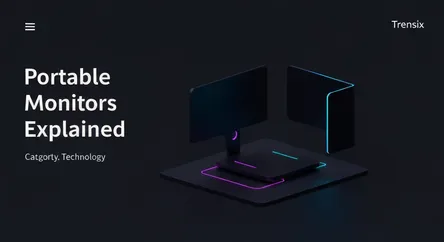Technology
Portable Monitors Explained

Discover what portable monitors are and why they're the ultimate gadget for productivity and entertainment on the go. Extend your screen anywhere!
What is it?
A portable monitor is a lightweight, compact external screen designed for mobility. Unlike traditional desktop monitors, these devices are slim, often weighing just a couple of pounds, making them easy to slip into a laptop bag. They typically connect to laptops, smartphones, or gaming consoles via a single USB-C cable that can handle both power and video, although some models also include Mini HDMI ports for broader compatibility. They serve as a second screen, effectively extending or mirroring your primary device's display wherever you are.
Why is it trending?
The rise of remote work, digital nomadism, and flexible work schedules has fueled the popularity of portable monitors. Professionals and students seek to replicate the productivity of their dual-screen office setups while on the move. The increased efficiency of having separate screens for research and writing, or for communication and coding, is a significant driver. Furthermore, advancements in technology have made them thinner, lighter, and more affordable, while the prevalence of USB-C ports on modern laptops has made connectivity seamless and clutter-free.
How does it affect people?
For many, portable monitors are a game-changer for productivity. They allow remote workers and frequent travelers to maintain their workflow efficiency from coffee shops, co-working spaces, or hotel rooms. They also enhance entertainment, providing a larger screen for gaming on consoles like the Nintendo Switch or for watching movies from a smartphone. For presenters, it's a powerful tool for mirroring their display to face a small audience without having to constantly turn to a larger screen behind them, creating a more engaging experience.